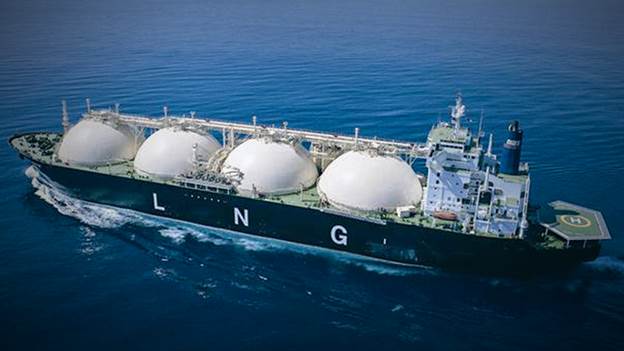Can Canadian natural gas improve the European Union's energy security?
Larry Hughes, PhD
Dalhousie University

Russia's invasion of Ukraine has prompted the EU to rethink its reliance on Russia for natural gas. If Canada, the worlds sixth largest producer of natural gas, is to be a viable alternative to Russia it must deliver sizeable volumes of natural gas in a timely manner.
For nearly 60 years, Russia (both as a member of the Soviet Union and, after the collapse of the Soviet Union, the Russian Federation) has been a reliable supplier of natural gas to much of Europe (initially western Europe and then as the European Union). The success of this relationship is built on Russia's need for hard cash and the EU's demand for natural gas for its industries, heating, and electricity.
The EU's reliance on Russia for natural gas has increased steadily over the past decade. Although the EU's demand fell slightly in 2020 because of the pandemic, it still consumed 380 billion cubic metres (bcm) of natural gas. Of this, about 42% was supplied by Russia, from pipelines and shipments of liquified natural gas (LNG) from its natural gas fields in western Russia.
There was already mounting concern in the EU and the United States over the EU's dependence on Russian natural gas before Russia's invasion of Ukraine, in large part because of the completion of the yet-to-be-certified Nord Stream 2 pipeline under the Baltic to Germany and Russia's reduction in exports to the EU last December and January, prompting the United States to ask Qatar to increase its supply of LNG to the EU in January.
Since the invasion, calls to diversify the EU's supply of natural gas have increased from all quarters, not least from EU Commission President Ursula von der Leyen who wants to reduce the EU's reliance on Russian natural gas by two-thirds by the end of this year. Canada's natural resources minister Jonathan Wilkinson has said that Canada is interested in shipping natural gas to the EU.
Canada, the world's sixth largest producer of natural gas and the largest exporter not exporting to the EU, produced about as much natural gas in 2020 as Russia supplied to the EU.
For Canada to export natural gas to Europe, not only will it need to increase the volume of natural gas it produces, it will also need facilities on its east coast to produce liquefied natural gas.
Last year, there were several potential LNG export projects under consideration on the east coast.
In 2014, Énergie Saguenay proposed building a $9 billion LNG liquefaction facility in Port Saguenay on the Saguenay River to produce 11 million tonnes of LNG a year starting in 2026. The project was to have used western Canadian natural gas moved through a new 750 km pipeline connecting TC's Canadian Mainline pipeline in northeastern Ontario to Port Saguenay. The project was rejected by the Québec government in 2021 and federal government in 2022, primarily over environmental concerns regarding beluga whales and the emissions caused from using the natural gas.
Repsol, which now owns the Saint John LNG gasification facility, expressed interest in building a six million tonne LNG export terminal in Saint John in 2015, but shelved the project in 2016. Natural gas would come from suppliers in the United States or Canada via the Maritimes and Northeast Pipeline which traverses New Brunswick from Nova Scotia to Maine. The company is apparently reconsidering the project in light of the events in Ukraine.
In 2013, Pieridae Energy announced it planned to build a $10 billion LNG liquefaction facility in Goldboro, Nova Scotia, to produce 10 million tonnes of LNG a year. The natural gas would be supplied from Pieridae's Alberta holdings and shipped across Canada and the United States. In the summer of 2021, the project was shelved because Pieridae Energy was unable to secure the funding required. Russia's invasion of Ukraine has rekindled Pieridae's interest in a smaller, less costly version of the project which would produce about 2.5 million tonnes of LNG a year starting in 2025 and use an offshore floating LNG liquefaction facility (FLNG), rather than the original onshore facility.
Had these projects gone ahead, by mid-decade Canada would be able to supply about 37 bcm of natural gas to the EU, replacing almost a quarter of Russi's annual exports. (If Pieridae's smaller project proceeds, it will supply about 3.4 bcm of natural gas, or about 2% of Russia's supply to the EU.)
Although events in Ukraine will probably hasten the EU's planned transition to renewables, it still sees a need for natural gas. Some countries, such as the United States and Qatar, are planning to increase their exports of LNG to the EU.
If Canada is to do the same, Canadian producers will need to increase their output of natural gas and investors will need to be convinced that Canadian natural gas can hasten the EU's transition to renewables and improve its energy security.
Originally published in Geopolitical Monitor, 22 March 2022.